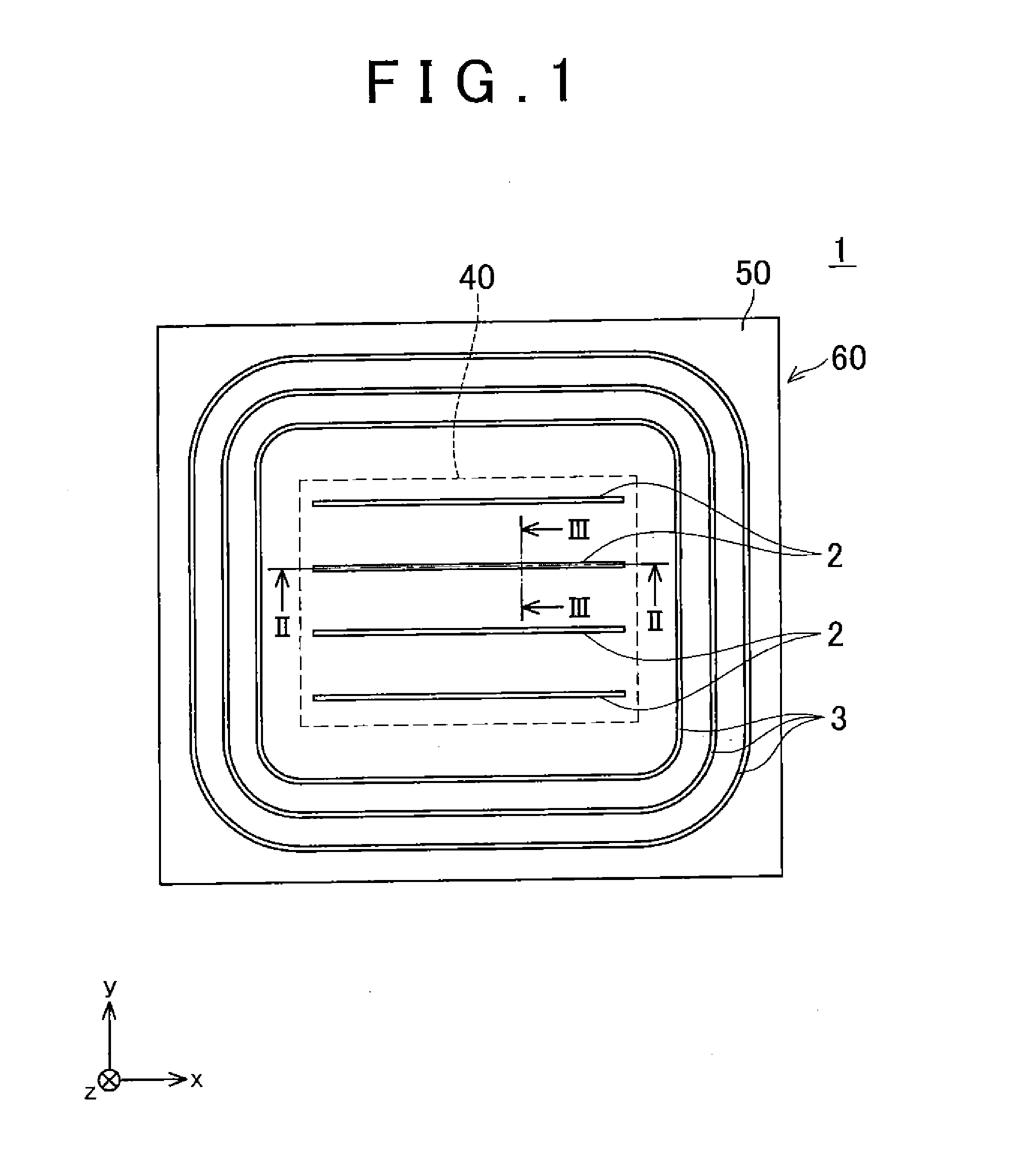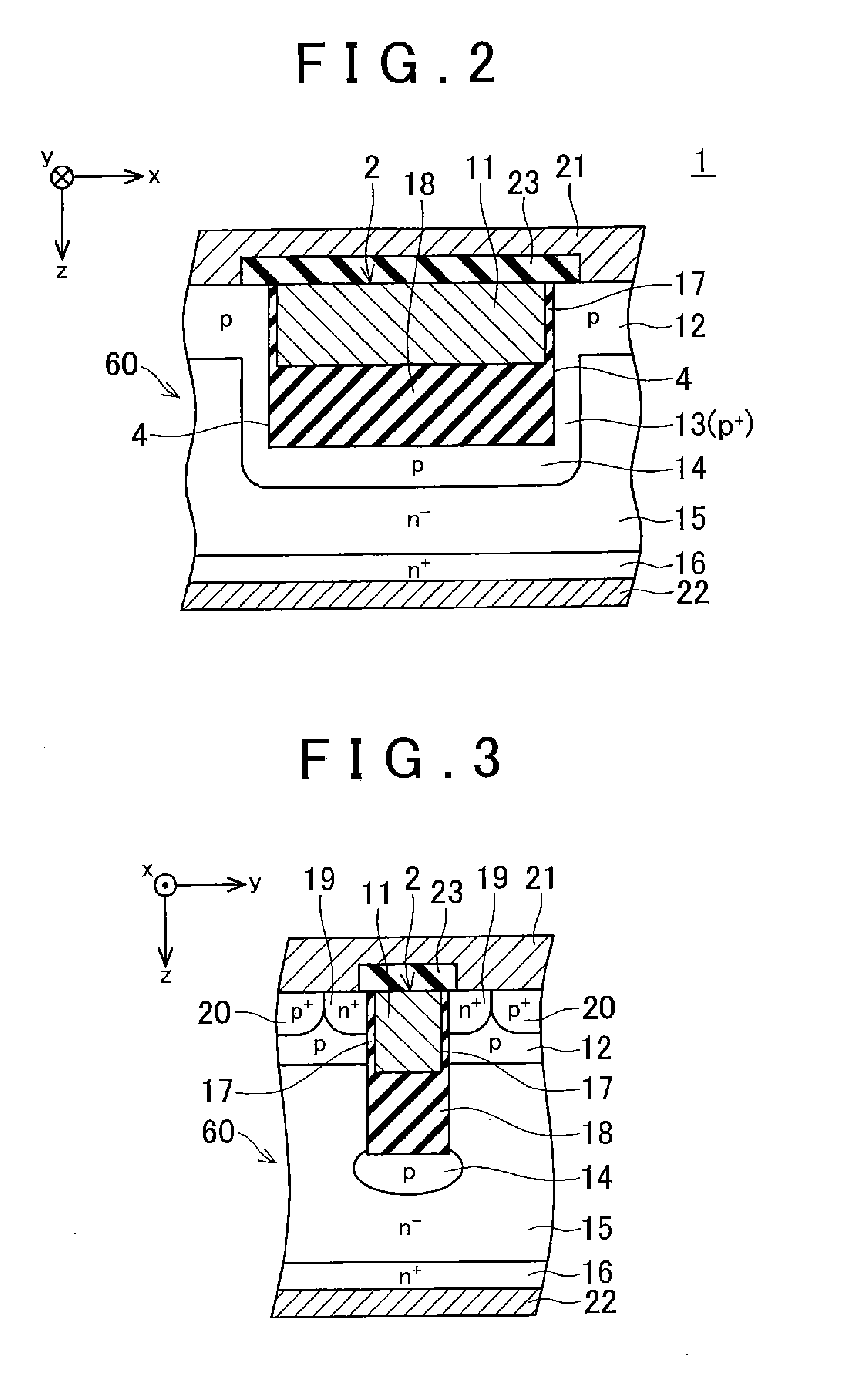Semiconductor device
a semiconductor and gate technology, applied in the direction of semiconductor devices, basic electric elements, electrical equipment, etc., can solve problems such as still exist, and achieve the effect of reducing remarkably the electric field applied
- Summary
- Abstract
- Description
- Claims
- Application Information
AI Technical Summary
Benefits of technology
Problems solved by technology
Method used
Image
Examples
first embodiment
[0031]Hereinafter, with reference to drawings, a semiconductor device of the present invention will be described. As shown in FIG. 1, a semiconductor device 1 of the present embodiment includes a semiconductor substrate 60, electrodes, an insulation film and other elements. The electrodes, insulation film and other elements are formed on an upper surface and a lower surface of the semiconductor substrate 60 and not shown in FIG. 1. The semiconductor substrate 60 is a SiC substrate and includes a cell area 40 in which a current flows and a terminal area 50 that surrounds the cell area 40. In the cell area 40, a plurality of gate trenches 2 are disposed. The plural gate trenches 2 extend linearly in an X-direction and disposed spaced apart in a Y-direction. In the terminal area 50, a plurality of terminal trenches 3 are disposed. The terminal trench 3 is formed annularly so as to surround the cell area 40. A corner part of the terminal trench 3 is formed into an arc shape. In the pres...
second embodiment
[0055]Other than the manufacturing method shown in FIGS. 8 to 11, another method which is shown in FIGS. 12 to 15 is available for manufacturing the semiconductor device 1a of the That is, as shown in FIG. 12, firstly, a gate trench 2a is formed in the semiconductor substrate 60, and the diffusion region 14 is formed in a bottom part of the gate trench 2a. The gate trench 2a and the diffusion region 14 are formed in the same manner as the conventional method.
[0056]Next, as shown in FIG. 13, silicon oxide 48 is filled in the gate trench 2a by a CVD method. Then, as shown in FIG. 14, a part of the silicon oxide 48 filled in the gate trench 2a is removed by etching, and a trench 52 for forming the gate electrode 11a is formed. Next, as shown in FIG. 15, a part of the silicon oxide 48 is removed by further etching, and a trench 54 for forming the conductor region 30 is formed thereby. When the trenches 52 and 54 are formed, the poly-silicon is filled in the trenches 52 and 54 according...
PUM
 Login to View More
Login to View More Abstract
Description
Claims
Application Information
 Login to View More
Login to View More - R&D
- Intellectual Property
- Life Sciences
- Materials
- Tech Scout
- Unparalleled Data Quality
- Higher Quality Content
- 60% Fewer Hallucinations
Browse by: Latest US Patents, China's latest patents, Technical Efficacy Thesaurus, Application Domain, Technology Topic, Popular Technical Reports.
© 2025 PatSnap. All rights reserved.Legal|Privacy policy|Modern Slavery Act Transparency Statement|Sitemap|About US| Contact US: help@patsnap.com



